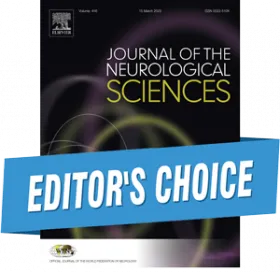Should antinuclear antibodies (ANA) be used to screen for connective tissue disease in neurological patients?
18 Feb 2025

Authors: Erez Magiel, Yuval Kozlov, Tomer Goldberg, Roni Loebenstein, Abdualla Watad, Omer Gendelman, Saar Anis
Editor's Choice
Journal of the Neurological Sciences. REVIEW ARTICLE| VOLUME 469, 123374, February 15, 2025
DOI: doi.org/10.1016/j.jns.2024.123374
Highlights
- Anti-Nuclear antibodies are frequently tested in patients with neurological symptoms.
- We assess the utility of ANA in diagnosing rheumatological diseases in neurological patients.
- ANA titer, age, and type of neurological diagnosis were associated with rheumatological diseases.
Patients with connective tissue diseases (CTD) can have a wide range of neurological manifestations. Neurological complaints may be the presenting symptom of CTD. Therefore, screening for CTD using anti-nuclear antibodies (ANA) is a common practice. However, due to the abundance of positive ANA in a healthy population, interpretation of the results may be complex.
We retrospectively evaluated files of patients hospitalized for evaluation of neurological symptoms in Sheba Medical Center during the years 2007–2022. Data was collected regarding epidemiology, ANA status, and rheumatological diagnosis.
4723 patients' files were reviewed. Of them, 46.6 % were positive for ANA. 6.9 % of them were diagnosed with CTD. This population had significantly higher rates of positive ANA status (71.2 % vs 28.8 %, p < 0.001), was significantly older (59.4 vs 53.4 years, p < 0.001) and had a significantly higher ANA titer (1:484.8, 1:268 p < 0.001) compared to patients without CTD. Factors which were found predictive for CTD diagnosis included female gender, older age, ANA titer above 1:160, and the diagnosis of a non-vascular etiology for the neurological disease.
Females, older patients, patients with high ANA titer and with diagnosis of a non-vascular cause to their neurological complains may be more likely to harbor a CTD and should probably be further evaluated.
Web design by Tribal Systems








